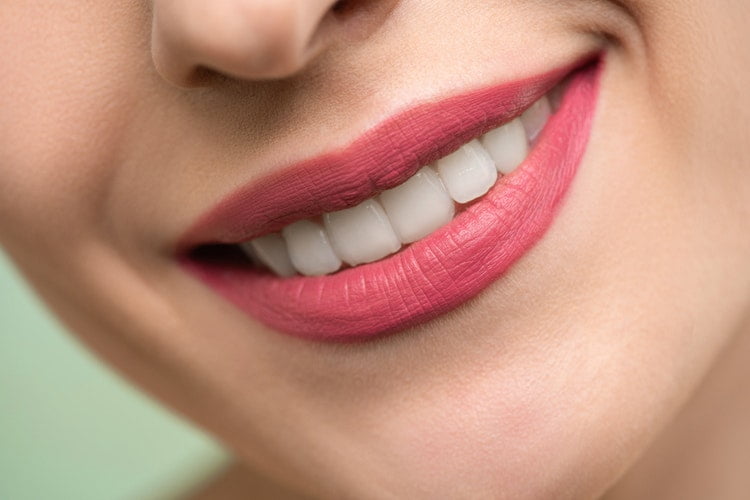Do you have difficulty showing your pearly whites because of irregular shapes and sizes of teeth and gaps between them? If this is you, there are procedures like cosmetic dentistry. This branch of dental health treatment focuses on your overall teeth health to boost your confidence by reforming their aesthetics. They achieve this through rectifying, reshaping, whitening, and straightening teeth. According to some studies, about three-in-ten Americans are unhappy with their smiles due to the state of their teeth. But you don’t have to experience this when there are efficient solutions.
The advanced procedure can help you regain your smile and confidence. Whether you are facing the issues of teeth discoloration, cracked teeth, or chipping, cosmetic dental therapy, such as tooth bonding, can be recommended. Let’s delve more into this to understand everything about it.

Tooth bonding procedure
Dentists witness all sorts of bad dental health and look for ways to fix different teeth problems. Severely discolored or chipped and completely disfigured teeth beyond recognition may require a bonded tooth. The procedure can have two stages. They clean, reshape, and polish the damaged teeth in the first stage. Next, an adhesive layer of composite resin material goes onto the surface of the affected tooth to restore the appearance and shape. They apply the coat of hardened composite resin material for added strength and stability. The material gets its hardness through the curing light that dries it so that it eventually bonds to the tooth permanently, restoring its beauty.
Since this procedure is more affordable than other cosmetic treatments, you can opt for it hesitation-free.
Reasons for getting dental bonding
Dental bonding is like applying a permanent protective layer over the surface of your teeth. A dentist will use a special gel to harden a resin into place right on your tooth surface, creating the illusion of a more intact or beautiful smile. Bonding helps mask imperfections like cavities or stains, closes gaps between certain teeth, looks uniformly sized in comparison, and even makes teeth appear longer. Dentists use several layers of resins and gels to create the best result for your cosmetic needs. The procedure usually takes half an hour to one hour, depending on the number of necessary applications. In some cases, the time may extend also. To be more precise, you can seek this treatment in the following scenarios:
- Chipped or cracked teeth
- Tooth discoloration or fading
- Gaps between teeth
- Resizing and reshaping
Difference between dental bonding and dental veneers
Both dental bonding and veneers are popular cosmetic dental procedures. But they create different effects. For example, the customized porcelain veneers stick to the front surface of the teeth. But before putting this layer, dentists typically cut a thin layer of enamel from your original teeth. Once fitted, these can give you a run of ten or twenty years. However, you need to know that it’s an irreversible process. You will need to get this treatment again when the veneers become old or eventually wear off. On the other side, dental bonding doesn’t require removing enamel to that extent, and that’s why the procedure is reversible. Only touchups at the gap of 10 years can be more than sufficient.
Before, during, and after dental procedures
In the initial meeting with you for cosmetic bonding in Syosset, Long Island, your dentist will first assess your cosmetic goals and ask for X-rays to check your gums and teeth’s condition. If these are alright, the procedure can start soon. Else, the doctor would want to treat other issues like decay, gum disorder, and other dental health problem first.
The dentist will choose a shade of the composite resin material used in bonding to suit your natural dental color as soon as the treatment begins. They will roughen and condition your teeth to comfortably help the bonding attach to them. Then, a coat of resin material will go on the surface of your tooth, making sure that it matches its shape and form. The curing and drying part will soon follow to allow the bonds to fix. Finally, the doctor will adjust and polish it for the final time.
After the procedure, brushing your teeth twice daily with fluoride toothpaste can be recommendable as you need to care for your mouth a bit. The toothbrush bristles have to be soft to avoid harming the bonds. You also have to floss your teeth. Additionally, following up with your dentist once in a while can be good to ensure everything is perfect.
Benefits of dental bonding
When you think of cosmetic procedures, you can rely on this specific treatment more for its advantages. One of them is no or little need to modify original teeth. You cannot expect this from veneers or crowns. Cost-effectiveness is another plus, making it more accessible to people with a lower budget. You can vouch for its versatility since it covers various dental imperfections, such as chipped, cracked, and faded teeth. Also, the procedure doesn’t take much time for the patient. It is a pretty fast and comfortable method.
There is no downtime. If you don’t know, you can go back to your routine almost immediately after its completion. Hence, it can be highly comforting to anyone. You have to take care of your mouth and teeth, but those hygiene practices, anyway, have to be part of your lifestyle.
Do you have healthy gums and teeth? Dental bonding can be safe that doesn’t come with any risks to your mouth because of its choice of material. But severe tooth decay or other issues may require additional treatments before dental bonding. Your dentist will let you know why they have to prioritize something and how these would be beneficial. Dental bonding cost is not much, but the overall cost can increase when combined with other methods. However, it will be best not to confuse these charges with dental bonding. Dental bonding as an individual and sole dental procedure isn’t expensive. If you have concerns, you can always clarify them with your doctor.



